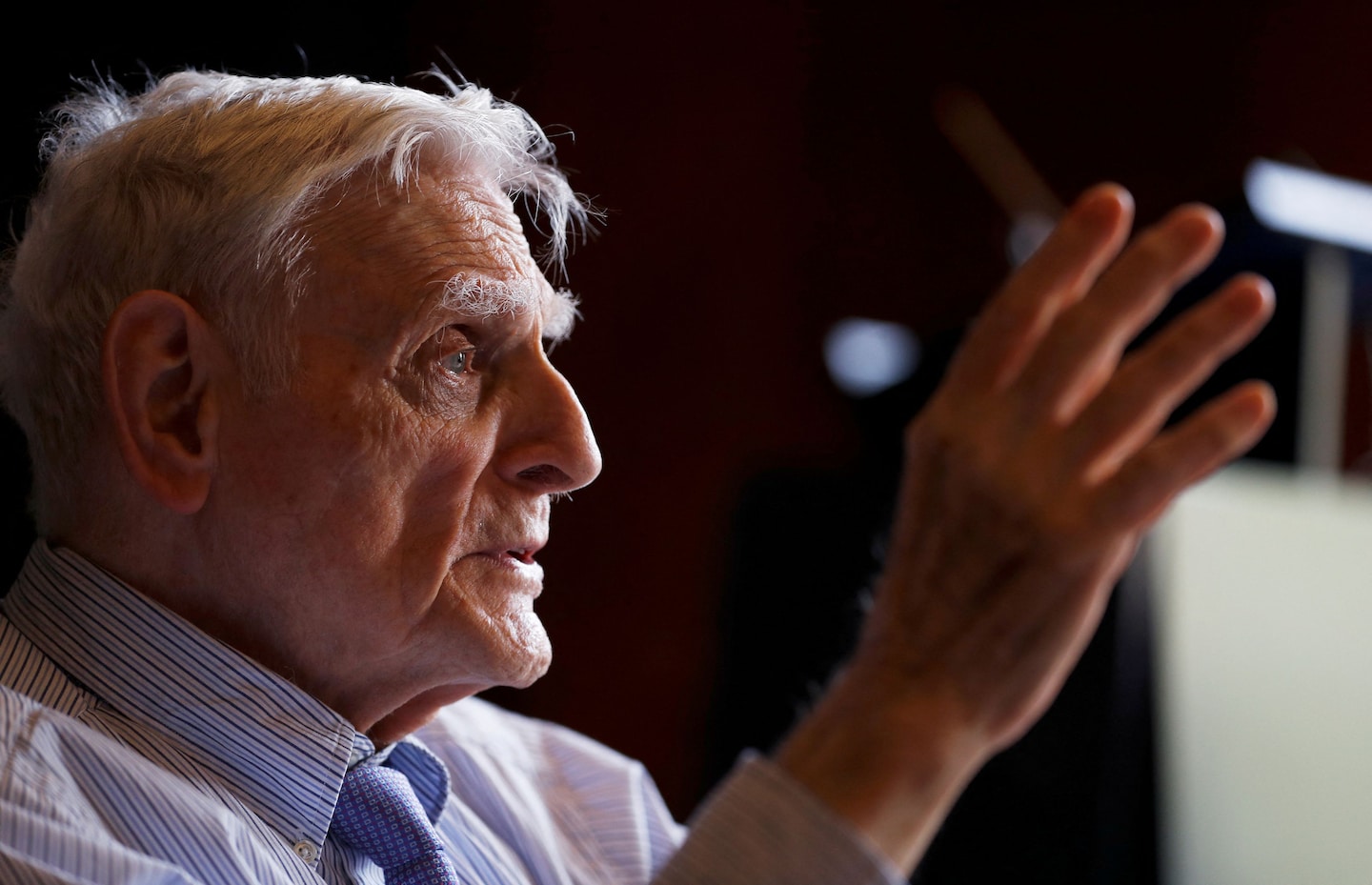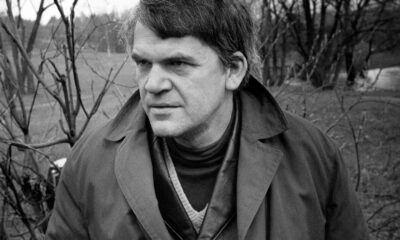English
John Goodenough, Nobel laureate for lithium ion battery, passes away at the age of 100

[ad_1]
[John Goodenough, an American scientist and revolutionary thinker, who alongside his comrades, played a pivotal role in the creation of the renowned lithium-ion battery that fueled the mobile technology revolution and empowered the electric car phenomenon, has unfortunately passed away. He departed from this realm at the age of 100 while residing in an assisted-living facility in Austin.
The University of Texas at Austin, where Dr. Goodenough served as an esteemed engineering professor and tirelessly conducted experiments on next-generation rechargeable power cells well into his early 90s, solemnly announced his demise.
Whilst Dr. Goodenough had reached the ripe age of 97 by the time he received the prestigious Nobel Prize in chemistry in 2019, thus becoming the oldest recipient in history, it was worth noting that his revolutionary discoveries in lithium-ion technology were made nearly four decades prior. Nevertheless, he remained deeply engrossed in pioneering experiments aimed at paving the way for a sustainable future, encompassing eco-friendly battery components and “super batteries” with colossal storage capacities.
Ever the tenacious and determined individual, Dr. Goodenough expressed his fervent desire in 2018 to solve the global car emissions problem, humorously quipping, “There’s still time. I want to see it before I die. I’m 96 years old.” To him, the urgency of finding a solution was paramount.
Dr. Goodenough was acutely aware that battery innovations had the capability to progress rapidly on multiple fronts. The foundation of modern batteries had been established in the 19th century, rooted in the concept of electrically charged ions traversing an electrolyte to generate electric current. However, the introduction of the ultralight metal lithium, which ushered in a new era, caused significant disruption in a matter of a few decades.
In the late 1970s, Michael Stanley Whittingham, a professor at the esteemed State University of New York at Binghamton, successfully developed the first rechargeable lithium-based battery that functioned at room temperature, thereby marking a major milestone towards consumer markets. However, Whittingham’s design was plagued by volatility, with the potential for explosions or fires during recharging. Nonetheless, the breakthrough was significant enough to warrant a patent application by ExxonMobil, who were generously funding Whittingham’s research.
Dr. Goodenough, driven by an unyielding determination to enhance the concept, embarked on a four-year endeavor at the venerable Oxford University. The perseverance paid off, and in 1980, Dr. Goodenough, in conjunction with two postdoctoral assistants, stumbled upon a new configuration for the battery. They retained the lithium base for the battery’s negative side (known as the anode), but astutely substituted cobalt oxide for the cathode, the positive pole, in place of Whittingham’s titanium disulfide. This alteration not only increased the voltage but rendered the battery significantly more stable. Moreover, the augmented power output enabled the battery to be produced in a significantly smaller form factor.
However, Oxford University exhibited little interest in pursuing a patent for this groundbreaking invention, leading Dr. Goodenough to relinquish the rights to a British atomic research group, effectively barring him from any future royalties.
Enter Akira Yoshino, a professor at Meijo University in Japan, who ingeniously made one final critical modification to the battery design. He replaced the anode with carbon and facilitated the flow of lithium ions between the poles. This concoction proved to be substantially more stable and capable of enduring thousands of recharges.
In 1991, Sony, in collaboration with Asahi Kasei Corporation, where Yoshino held an affiliation, harnessed Yoshino’s design and successfully produced the world’s first commercial lithium-ion battery. Sony promptly replaced the bulkier nickel-cadmium batteries in their video recorders, which were their flagship products at the time. Henceforth, a deluge of applications for lithium-ion batteries emerged, encompassing cellphones, tablets, laptops, as well as a myriad of other devices ranging from electric toothbrushes to the revolutionary Tesla electric vehicles and hybrid cars.
The Nobel Committee was acutely aware of the monumental impact of Dr. Goodenough’s, Whittingham’s, and Yoshino’s work and duly awarded them the Nobel Prize, asserting that they had created the optimal conditions for a wireless society free from fossil fuels, thus bestowing the greatest benefit upon humankind.
However, somewhat paradoxically, Dr. Goodenough dedicated the latter portion of his remarkable career to challenging the very work for which he was lauded by the Nobel Prize. He harbored concerns that the reliance on battery components such as cobalt and lithium, as well as other rare-earth elements, would breed conflicts akin to the battles fought over oil.
With regards to lithium, Dr. Goodenough postulated that its scarcity could potentially reignite political conflicts and “gunboat diplomacy” in order to secure dwindling supplies. Without innovative battery designs, the world would be thrust into an era of incessant warfare fought over the last vestiges of scarce resources, as Dr. Goodenough opined in the 2015 book “The Powerhouse: Inside the Invention of a Battery to Save the World” by author Steve LeVine.
A significant portion of Dr. Goodenough’s research efforts revolved around “super batteries” that incorporated nanotechnology to dramatically boost storage capacities. Further exploration entailed investigating the feasibility of utilizing sodium as the anode, thus harnessing an inexhaustible supply drawn from the vast oceans.
Even as recently as 2020, Dr. Goodenough collaborated with the start-up Energy Exploration Technologies (EnergyX), founded by the enterprising Teague Egan, to investigate initiatives including solid-state batteries. Such batteries represent a paradigm shift away from the conventional liquid or gel electrolytes in favor of a solid core. Advocates of this transformative change claimed it could potentially yield higher voltages, accelerated recharging times, longer battery life, and significantly reduce the risks of combustion.
“I have learned,” shared Dr. Goodenough in an interview with the University of Chicago Magazine in 2016, “to be open to surprises.” This statement beautifully encapsulated his unwavering commitment to pioneering groundbreaking solutions.
John Bannister Goodenough, born on July 25, 1922, in Jena, Germany, to American parents, lived a life filled with remarkable achievements and contributions to society. His father, a graduate student at Oxford during his birth, later assumed a teaching position to impart knowledge on comparative religion at Yale University, prompting the family’s return to the United States in the 1920s.
In his memoir, “Witness to Grace,” published in 2008, Dr. Goodenough disclosed that his parents, who were deemed an ill-suited pair, were inattentive towards him and his three siblings. Furthermore, he had to overcome undiagnosed dyslexia, a learning disability, single-handedly during his academic journey.
After graduating at the top of his class at the esteemed Groton School in Massachusetts, he was granted a scholarship to Yale University, where he heartily pursued a major in mathematics. Unfortunately, he was called to serve in World War II before completing his degree in 1943. However, Yale graciously awarded him his degree by taking into account his military meteorological course credits. Dr. Goodenough dutifully served as a meteorologist in the Army Air Forces, stationed in Newfoundland and the Azores.
Fortuitously, he was selected for a government-funded scholarship for veterans, which opened the doors for him to delve into the world of physics at the University of Chicago, where he had the privilege of working alongside esteemed professors such as the renowned nuclear physicist Enrico Fermi. Dr. Goodenough earned his master’s degree in 1951 and completed his doctorate the following year. After a brief stint at Westinghouse, he accepted a position at the prestigious Massachusetts Institute of Technology (MIT), where he engaged in various projects including early experiments pertaining to random-access memory (RAM) in computers.
In 1976, Dr. Goodenough made the decision to shift his base of operations to Oxford, where he assumed the role of a chemistry professor. However, his tenure at Oxford lasted only a decade before he transitioned to the University of Texas’s esteemed Austin campus. Over the years, Dr. Goodenough received numerous accolades, including the National Medal of Science in 2011 and the Enrico Fermi Award in 2009. His literary contributions encompassed not only his memoir but also seven books on scientific subjects, in addition to hundreds of articles he penned for esteemed scientific journals.
Dr. Goodenough’s marriage to Irene Wiseman in 1951 endured until her untimely passing in 2016. They did not have any children. He is survived by a half-sister and a half-brother.
Although Dr. Goodenough sadly never received patent royalties for his groundbreaking innovations at Oxford, his laboratory became embroiled in high-profile financial battles surrounding battery technology.
In 2008, the University of Texas and Hydro-Quebec reached a settlement amounting to $30 million, which involved the Japanese telecommunications giant Nippon Telegraph and Telephone (NTT) compensating the parties involved. NTT had patented battery innovations made by a graduate student under Dr. Goodenough’s guidance, allegedly provided to NTT by a visiting Japanese scientist. It is important to note that NTT did not admit any wrongdoing as part of the settlement.
Meanwhile, at MIT, Professor Yet-Ming Chiang boldly proclaimed his pivotal role in the enhancement of Dr. Goodenough’s battery concepts. He subsequently founded a company called A123, which experienced meteoric growth in the stock market, culminating in an initial public offering in 2009 that briefly propelled the company’s valuation past $1.9 billion. However, three years later, A123 filed for bankruptcy and had to liquidate its assets to a rival battery manufacturer.
These episodes served as valuable lessons for Dr. Goodenough, who recognized that, as the world increasingly gravitated towards sustainable energy, a surge in claims regarding breakthrough battery technologies would inevitably arise. Hence, he sagely advised caution when faced with exuberant fanfare, stating, “When everybody’s blowing trumpets, be careful,” in an interview with the Economist.
Dr. Goodenough’s contributions to humanity and the field of science remain indelible, solidifying his status as a true pioneer whose pursuit of knowledge and dedication to sustainable energy captured the imaginations of generations to come.
Gift this articleGift Article
[ad_2]





